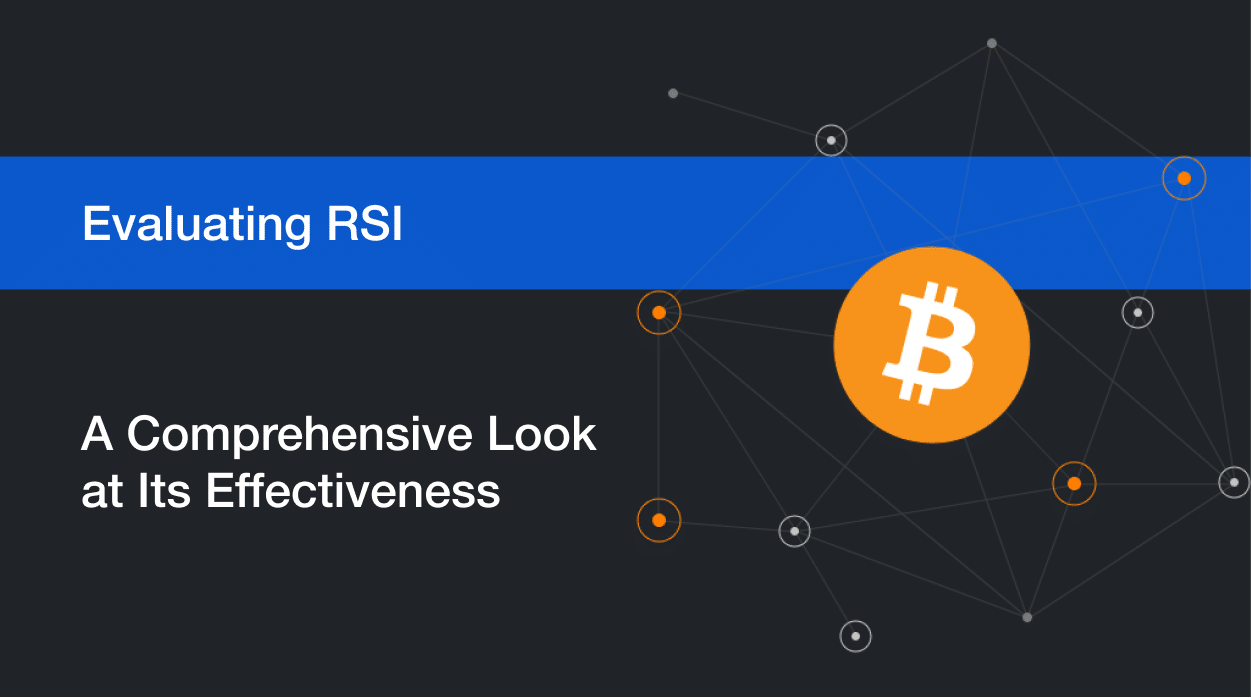
Is RSI a Good Technical Indicator for Bitcoin? [Video]
Relative Strength Index (RSI) is a technical indicator that measures the speed and change of price movements to find reversals. Is RSI good for use in trading Bitcoin and cryptocurrency?
Watch the video to find out and read more detail in the article below.
What is Relative Strength Index (RSI)?
RSI was created by one of the most famous technicians, J. Welles Wilder (Amazon.com Books). It is designed to look for overbought and oversold price conditions. This gives you a leading indicator that price is about to reverse.
At its base level, the RSI formula is:
RSI = 100 – [100 / ( 1 + (Average of Upward Price Change / Average of Downward Price Change ) ) ]
This formula ensures values range between 0 and 100.
- If the value drops below 30, the conditions are considered oversold and a buy signal is generated.
- If the value goes above 70, the conditions are considered overbought and a sell signal is generated.
You can glean additional insight from the direction of the indicator value especially as it compares to the actual price change. When the two move in separate directions, you see divergence. This becomes more challenging to quantify and take precise action on but can be useful nonetheless.
![Is RSI a Good Technical Indicator for Bitcoin? [Video] 1 RSI Indicator Sample](https://crypto-ml.com/wp-content/uploads/2018/11/RSI-Indicator.png)
What are the RSI parameters?
RSI has one parameter, which is how far back price is considered. The default value is 14, which means it considers price for the last 14 periods, whether days, hours, or minutes.
Having one parameter makes analysis simpler.
Does RSI work for Bitcoin and cryptocurrency?
RSI is a very popular technical indicator, however, it comes with particular risk when used with Bitcoin and other cryptocurrencies. While we can only speak of past behavior, it’s safe to assume the strong price movements of Bitcoin and other cryptocurrencies will continue into the foreseeable future.
With RSI, if the stock, commodity, or crypto you are analyzing trends very sharply, you risk selling before massive rallies and buying before massive drops. Why?
Caution must be taken during strong trends!
With crypto, we see fast sell offs followed by sustained downtrends. Likewise, we see quick accumulation followed by massive bull runs. Price is simply very extreme and that makes using RSI highly risky.
What does this mean? It means RSI might tell you to sell before big runs. And it might tell you to buy right before a major drop.
For example, RSI was signaling “overbought” regularly in 2017. Following RSI, you would have missed out on the crazy gains in late 2017.
Similarly, as price dropped in 2018, RSI signaled “oversold” which would have triggered you to buy into the massive drops that continued.
These situations can be seen throughout the history of Bitcoin.
![Is RSI a Good Technical Indicator for Bitcoin? [Video] 2 BTC RSI Overbought](https://crypto-ml.com/wp-content/uploads/2018/11/BTC-RSI-Overbought-e1541897687168.png)
When is RSI good for Bitcoin?
RSI works extremely well in sideways, channeling markets. Recently, Bitcoin has been in a bear market, but that does seem to be giving way to a sideways, channeling market. Perhaps RSI will be a good tool during this period. But the risk is that we do see a rally and RSI causes us to miss when the channel top is broken.
![Is RSI a Good Technical Indicator for Bitcoin? [Video] 3 Crypto-ML Fear and Greed Index](https://crypto-ml.com/wp-content/uploads/2018/11/Crypto-ML-Market-Index.png)
RSI is also generally more effective in faster time frames, such as hourly as opposed to daily.
Additionally, you can try iterating on the parameter. Instead of 14, perhaps a smaller (faster) number will give you better results. This is where machine learning (How to Use Machine Learning to Trade Bitcoin and Crypto) can really help. Fortunately, RSI only has one parameter, but most indicators have numerous. Letting a machine chug through these parameters and try millions of scenarios can help answer questions like this much better than humans can.
Last, combining RSI with other indicators can help you consider multiple factors before making a trade. This is the recommendation most technicians would give you; however, are you really being scientific about your trading at this point?
- How do you know precisely which indicators to use when?
- What parameters do you set for the indicators?
- What do you do when the results are ambiguous?
In many cases, technicians are leveraging experience that cannot be directly analyzed or taught. There are simply too many variables for humans to consider, which is where machine learning comes into play.
More on machine learning for trading Bitcoin
As you can see, utilizing traditional technical indicators for trading is complex. You have to pick the right indicator for the right situation, but to do this in a precise manner, highly complex, iterative math is required. That is where machines can help. To learn more about machine learning for trading Bitcoin and other cryptocurrencies:
- DIY Project! Bitcoin price prediction with machine learning in Excel
- Learn more about Crypto-ML.com
- Read How to Use Machine Learning to Trade Bitcoin and Crypto
For more information on the details behind RSI, see articles on:
How do you use RSI? Let us know in the comments below.
Subscribe to the Newsletter
Join 7k+ working professionals to "The Five-Year Plan". Every Saturday morning, you'll receive one actionable tip to create life-changing wealth in crypto.